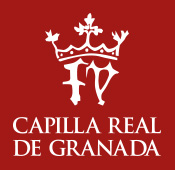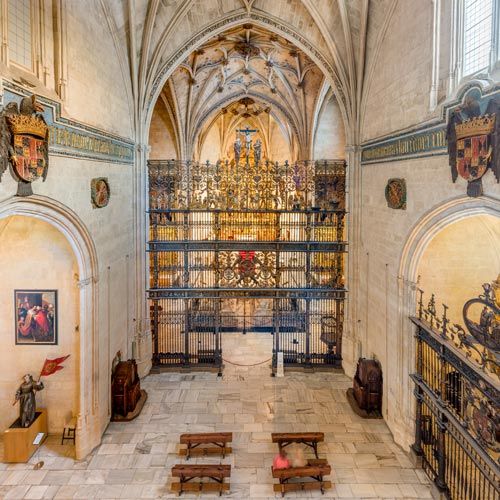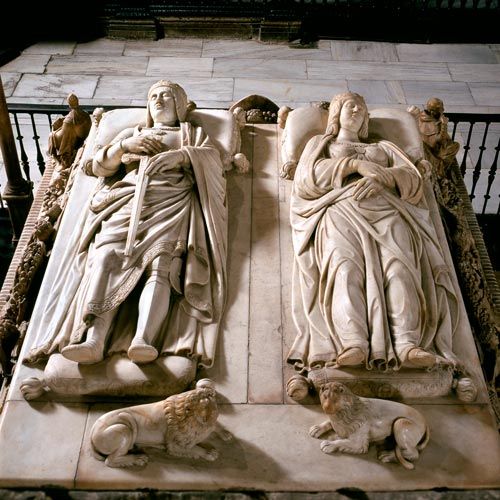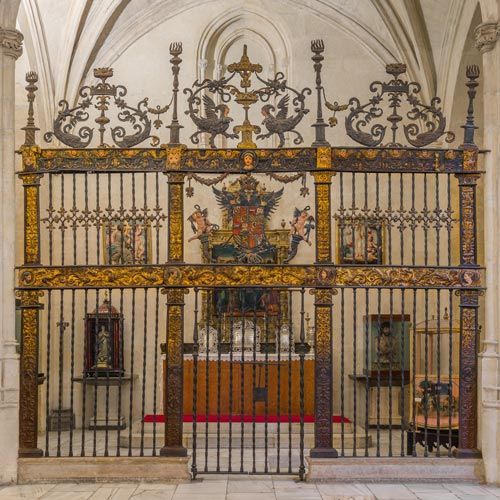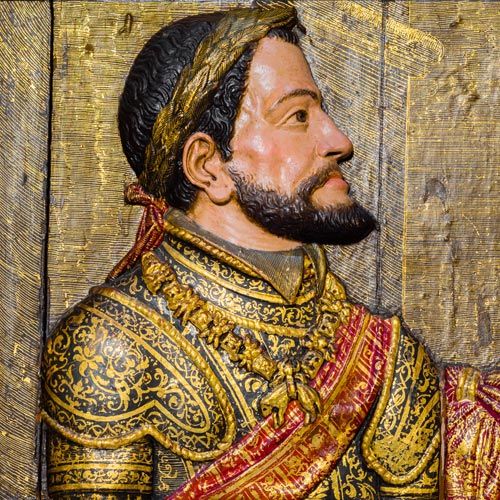In Granada
«the time, the space, the sea, the moon, distances… there is a need for limiting and domesticating the boundless terms ».
In the rich scene of the Spanish grilles’ art from the end of the Gothic and Renaissance periods, the Royal Chapel of Granada offers several pieces of work in order to value its three functions: practical, aesthetic, iconographic. The Royal Chapel grilles are protector lattices or access porticoes limiting the space according to the need of the Spanish sensitivity for avoiding deep perspectives.
THE MAIN GRILLE
This grille, «perfectly finished », is one of the most beautiful pieces of work from the Spanish 16th century. It is a work by Bartolomé.
Since it was conceived as an altarpiece, it is arranged into streets and tiers. Horizontally, it consists of three floors plus the attic. Vertically, there are five streets —the main one of double width— which are separated by columns. In the whole work, Gothic and Plateresque styles are balanced. From the bottom to the top the decorative apotheosis goes in crescendo to end visually merging iron and stone for the visitor.
In the very restrained first tier, the scenes of foliage and mythical creatures found in the columns—work by Cubillana— and in the frieze are the main decoration. The frieze is adorned in the Italian style combining plants, medallions with busts and small naked figures.
At the main street, on the second tier the Coat of Arms of the Catholic Kings is remarkable for its expressiveness and symbolism. Circular rhythms, and the combination of golden and polychrome elements are present to draw our attention to the royal tombs. Six apostles, under a gothic baldachin, complement the sculptural decoration of this section. These decorative motifs are also depicted at a smaller size on the third floor. Between this floor and the next one there is a wonderful frieze with golden foliage and mythical creatures where s-shaped rhythms are remarkable.
In the top “attic” tier, the grille turns into an altarpiece with iconography related to the Main Altarpiece: Exaltation of the Passion of Jesus Christ, St. John the Baptist and St. John the Evangelist. The scenes depict, from left to right: The Baptism of Jesus, the Decapitation of the Baptist, Gethsemane, the Garden of Gethsemane, the Crowning with Thorns, the Scourging, The Descent, The Burial, The Resurrection and John the Evangelist’s martyrdom. Above the plateresque festoon, you can see the main scene, both from a formal and an iconographic point of view, Jesus crucified, accompanied by the Virgin and St. John. Triumph is symbolised by the imposing presence of the composition in the space. The composition size, two and a half metres high, represents the Christian philosophy about death. Death is not considered to be the end of life, but a way to be reborn to another life. All in all, the Christian hope of the new skies and the new land.
THE OTHER TWO ROYAL CHAPEL GRILLES
